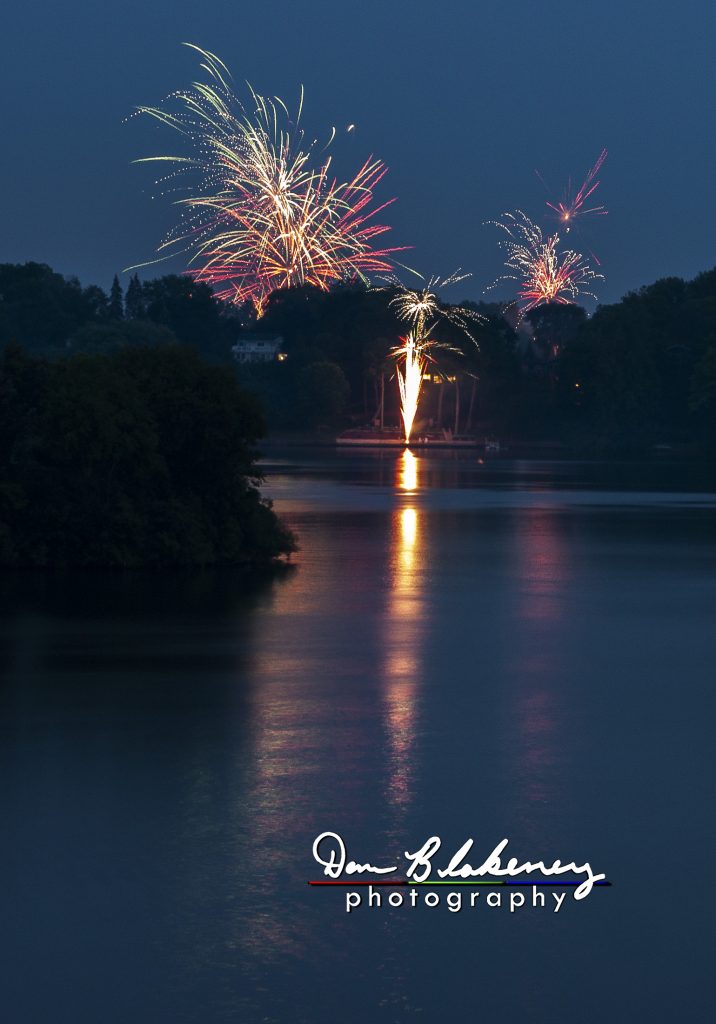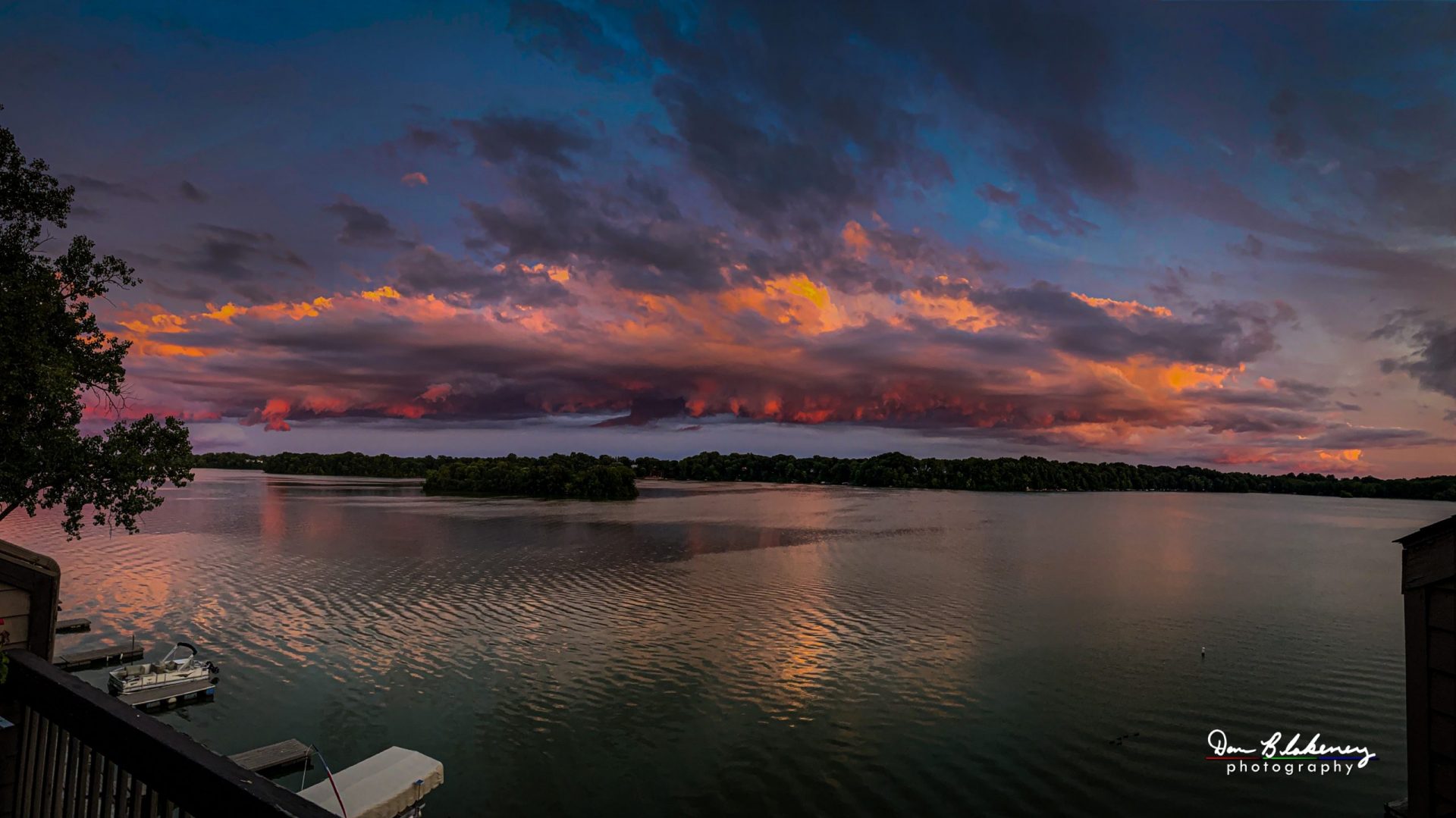The landform that my condominium is built on is a cape. The cape projects into a man made lake that was formed when Henry Ford built an hydroelectric damn across the Huron River to provide power for a factory.

The river, over the millennia had meandered back and forth and carved itself a broad gentle flood plain of classic design that had entrenched itself into the earth from 25 to about 100 feet deep depending on the preexisting topography. In many places the relief is significant enough to be termed river cliffs. The whole thing slopes to the east so the east end of the lake (right before the damn) is the deep end. Waters from the interrupted river filled the flood plain forming a long, digestive-tract looking lake of 975 acres.
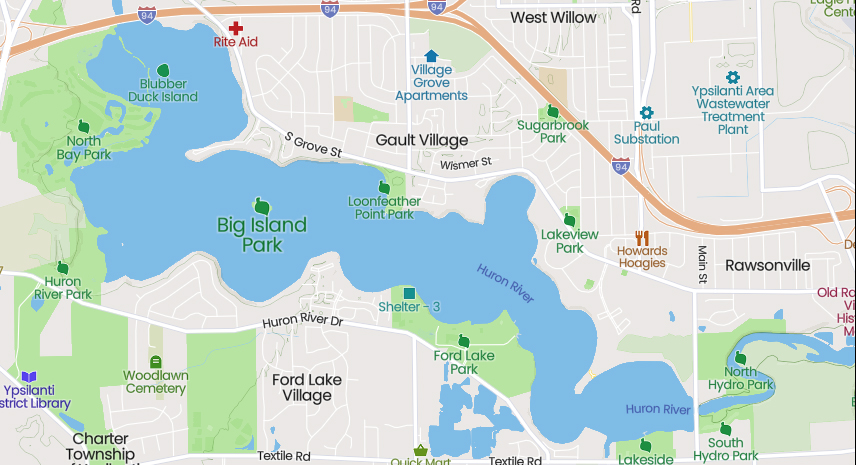
The original flood plain had a few hills in the western end and those now poke above the surface forming a few Islands. A quarter mile out into the lake in front of my place is the largest of these islands, Big Island. It is an undeveloped Township Park.

From my third floor balcony Ford Lake looks like a big valley full of water. I take thousands of pictures from my balcony every year. The week of July 4th finds the valley full of fireworks most nights. Over these past few years I have been developing a method to get good pictures of airborne fireworks.
I’ve read several articles about how to capture fireworks and while some of them sound like they have good ideas none of the essays have encapsulated closely the approach I take. So here, today, I’ll share a few photos and share a bit about how I captured and then finished them.
The first thing to know is I do not own expensive sophisticated cameras. The pics shown here are all taken from Panasonic Lumix cameras. Two are old micro-4/3 cams (Lumix GF2) and one is a Lumix FZ100 bridge camera with a 1” sensor. You could grab the same three cameras, used, on eBay for about $600.00. I love these things.
“I shutter to think…”
I have been taking long exposure night-time pictures of my valley for years. The moonspill on the water when captured over 30-60 seconds makes the lake look like it has a sparkly gauze blanket floating on it. Moonlit windswept clouds smoosh across the skies and air traffic can leave wonderful traces across the heavens. Boat traffic on the lake surface also leaves interesting light effects. Really nice stuff. These exposures need a sturdy tripod, high f-stop, low ISO, and a remote trigger to eliminate camera shake from pressing the shutter release. I don’t own a remote trigger so I set the cams to a 2 second shutter timer. That way any shake introduced by my hand is over by the time the shutter opens. In my case its important to be still once shutters are open, as footfalls on the balcony floor can transfer to the cams through the tripod legs. You don’t want to introduce motion blur into stationary objects in your pictures. Framing in night landscapes takes only a few test shots to settle on your composition. I toy with the white balance until I get the moonspill in the captured image to be as close as possible to what my eyes report in the valley before me.
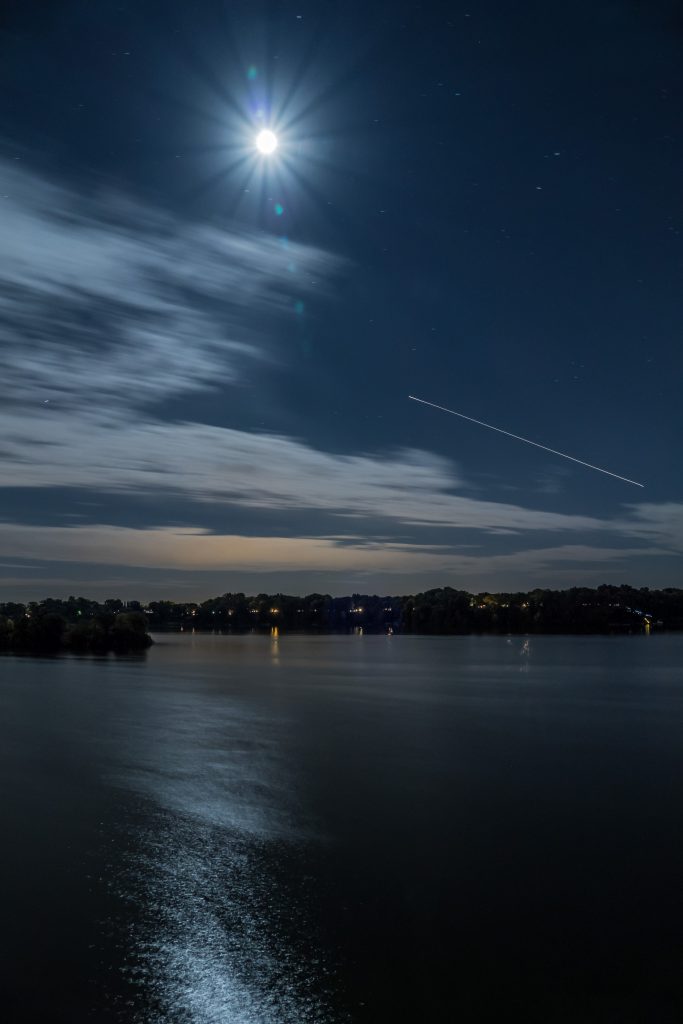
The low ISO and high f-stop starve the camera for light so as not to get an overexposed image from having the shutter open for so long. The low ISO helps to keep down the noise in the image too.
To get firework images the way I like them, I do much the same thing as above with the added complication of framing in areas of the sky where fireworks MAY explode. Its like playing battle ship where your opponent moves his game pieces in between turns. In a dark sky that won’t get overexposed with a long shutter speed, igniting chemical explosions leave dramatic images. Wide shots can include several skyrockets in the same image that weren’t in the sky at the same time but appear as if they were.
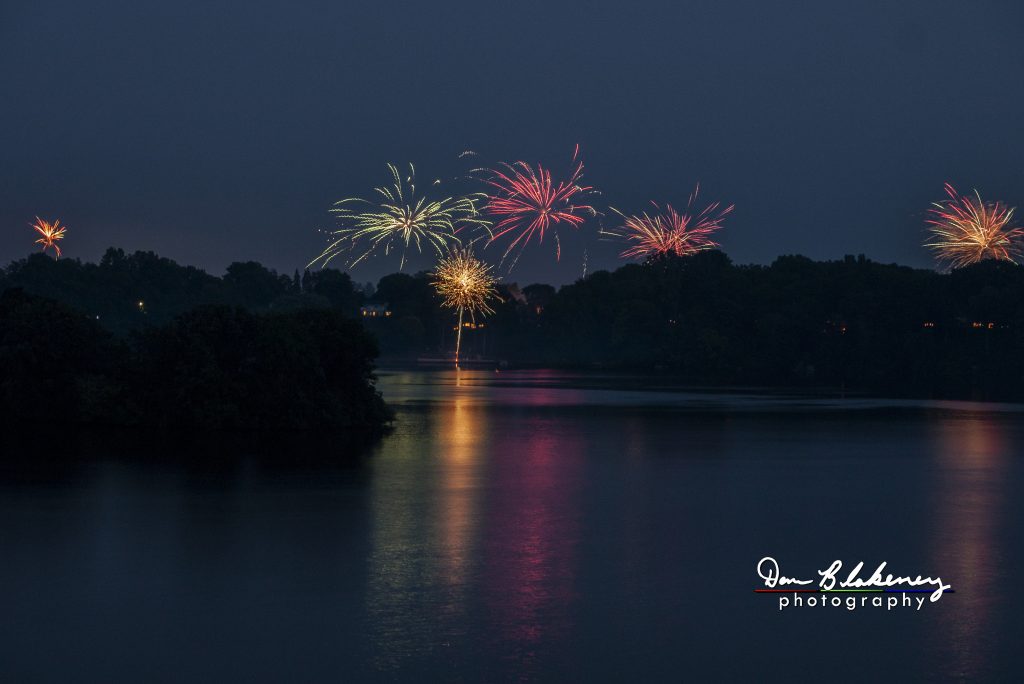
Repeat skyrockets in the same area of the sky can leave busy, multilayered images in these long exposures too, which can be interesting, or at times, too brilliantly over-done, and you can’t see individual traces.

So if you’re feeling lucky you can shorten your shutter speed to say 20 seconds, trying not to get too many skyrockets at the same place and time – it’ll be bright enough to make a good picture if you get one – but – it needs to happen in a more precise time window. In this picture a boat drifted through my frame too.
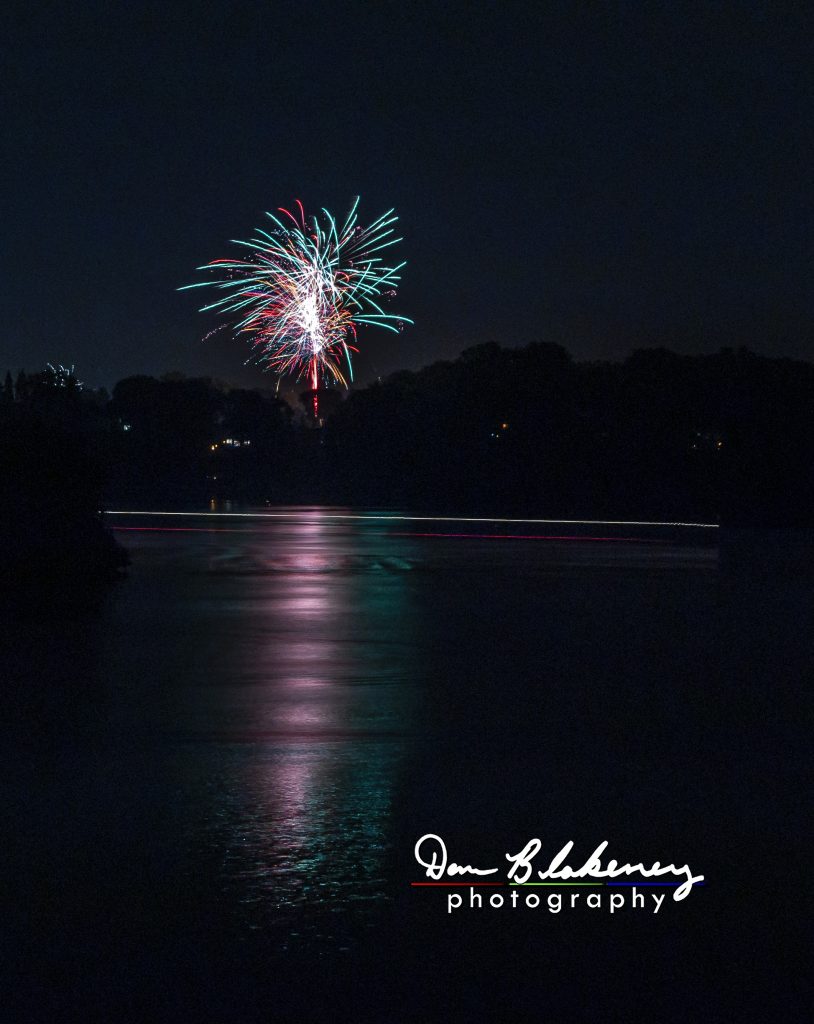
Anyway. I take my three lumix cams and put the two older ones so one shoots a particular section of the valley (that I change from time to time) and the other shoots a wide shot that I change much less. They’re set to capture jpeg+raw with a 3/2 or 4/3 aspect ratio. This leaves me more cropping options than if I used a 16:9 aspect ratio. I like to include the lakes surface for reflections whenever possible. The shutters are at a 2 second delay. The FZ-1000 with the 1 inch sensor is the cam I pay the most attention to. The other cams just get re-triggered after their long-exposure noise reduction cycle concludes.

So my evening goes like that – triggering long exposures, sitting very still and trying to monitor three cams at once. When ever I break the rhythm and use playback to see what a cam just captured (so I can reframe or address needed changes in the settings,) invariably a VERY cool skyrocket explodes unrecorded…
The next morning I use Adobe BRIDGE and look at the contents of the camera cards and ingest the images that have fireworks present. I put the files in separate folders by camera so I can assess each cams settings and framing and capture quality for next year.
The cams lay down jpeg and raw versions of the images. I scan the jpegs and when I find an image I want to use I open up the raw version in the raw editor and process the file.
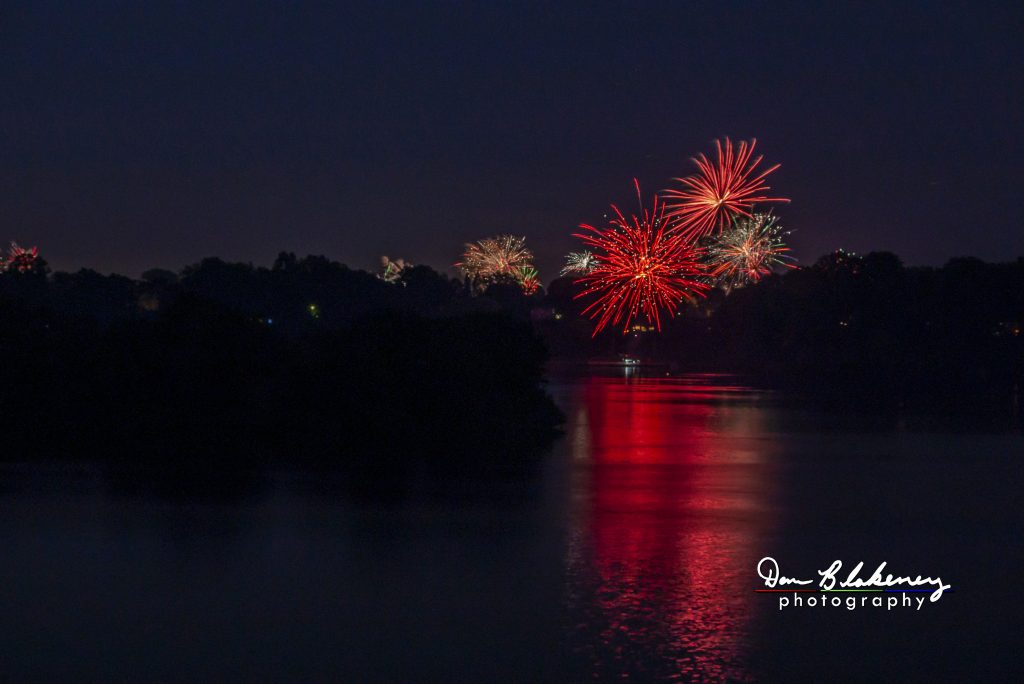
A common processing adjustment is to lower the mid tones which darkens the sky and helps the skyrocket traces stand out a bit more. I sometimes adjust white balance too with the aim of correcting the color of the sky – as the night progresses an inky blue sky can turn burgundy or even ugly purple-brown so at times an adjustment to help it back towards blue is needed. A little nudge on the clarity slider can help clear up ambient smoke in the air too – which looks great.

Some of the images can have a bit of noise in the dark sky and you can treat that fairly aggressively with little ill effect on the airborne incendiaries, which can be starkly carved into the night sky with dramatic edges – softening that a bit as a side effect of defeating noise in the shadows works nicely.

And lastly – joyfully – the images at times vignette themselves. A dark sky with a big KaBlewey in the middle is accentuated naturally and organically. They can look really great.
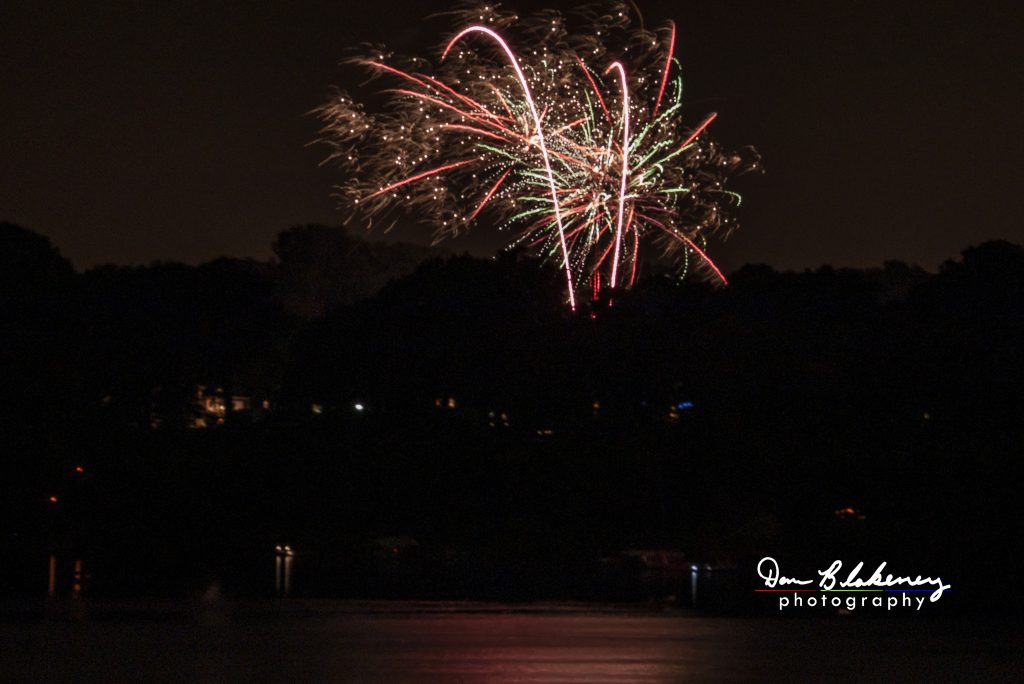
There’s no need to think you must have multiple cameras to undertake a photo project for fireworks. Thats just my particular personal mania, I have all these cameras so I use all these cameras. I am sure I miss some good shots by spreading my brain so thin among all the instruments. I should use just the one main cam, but I can’t seem to help myself…
